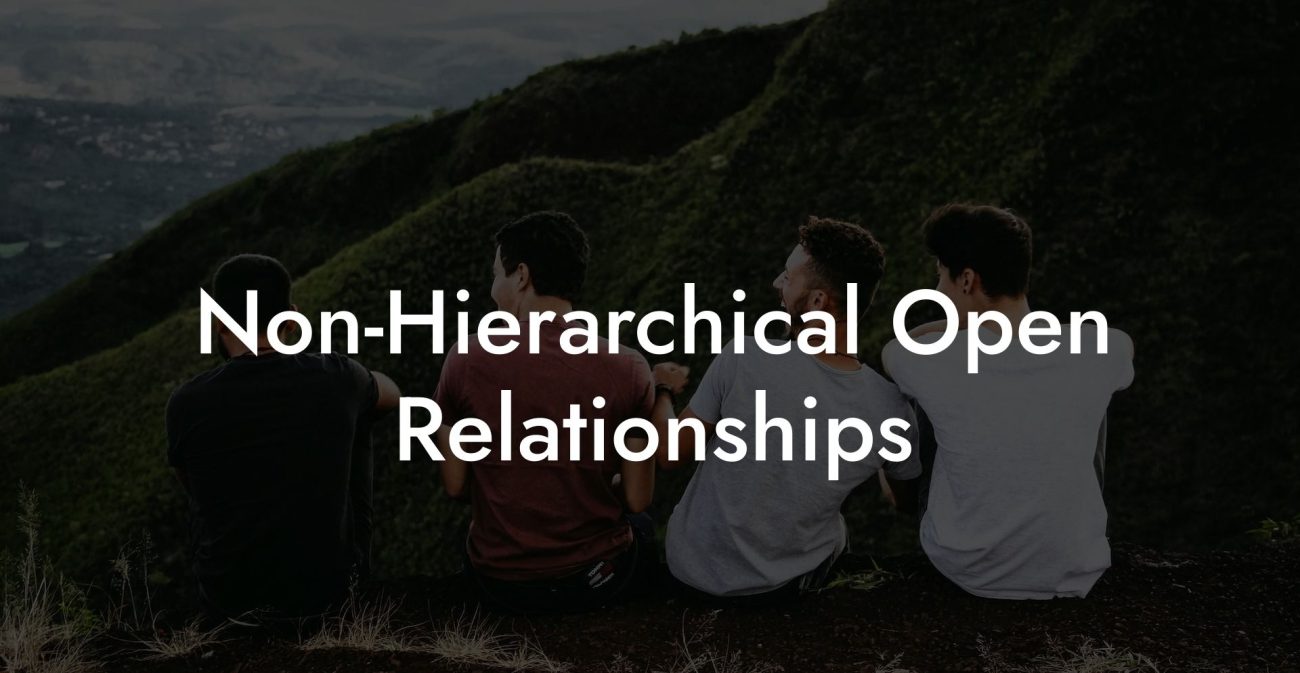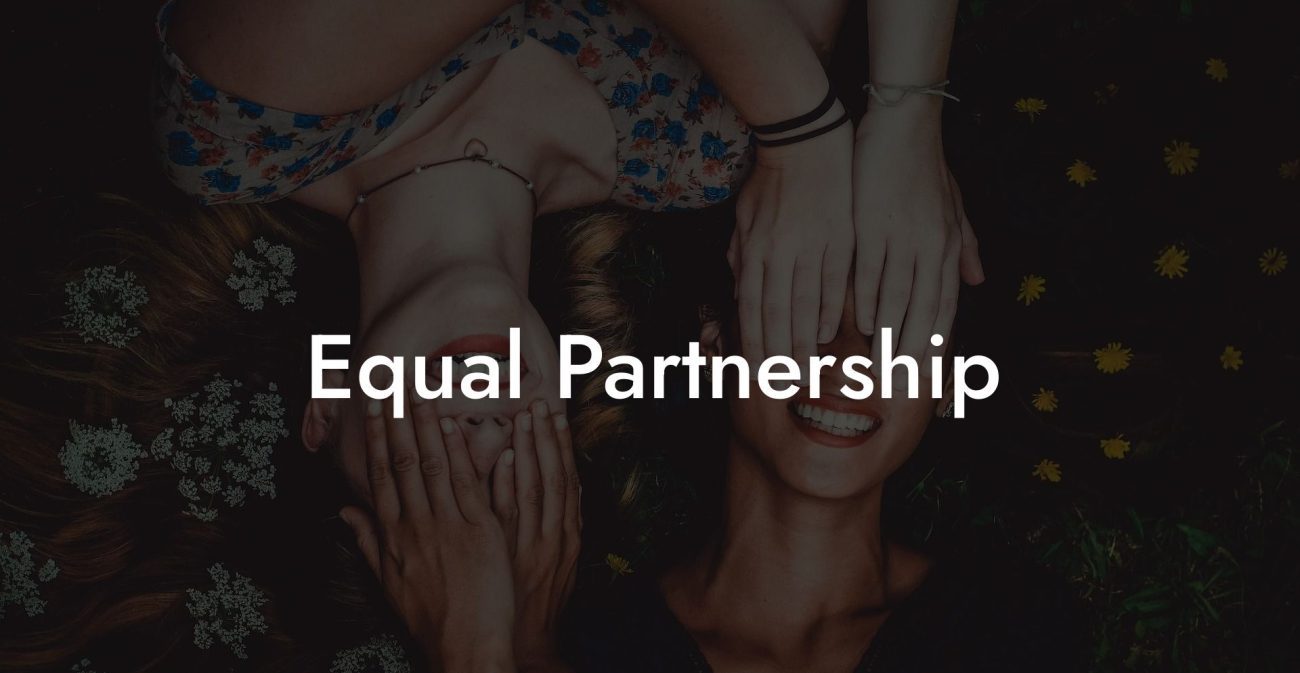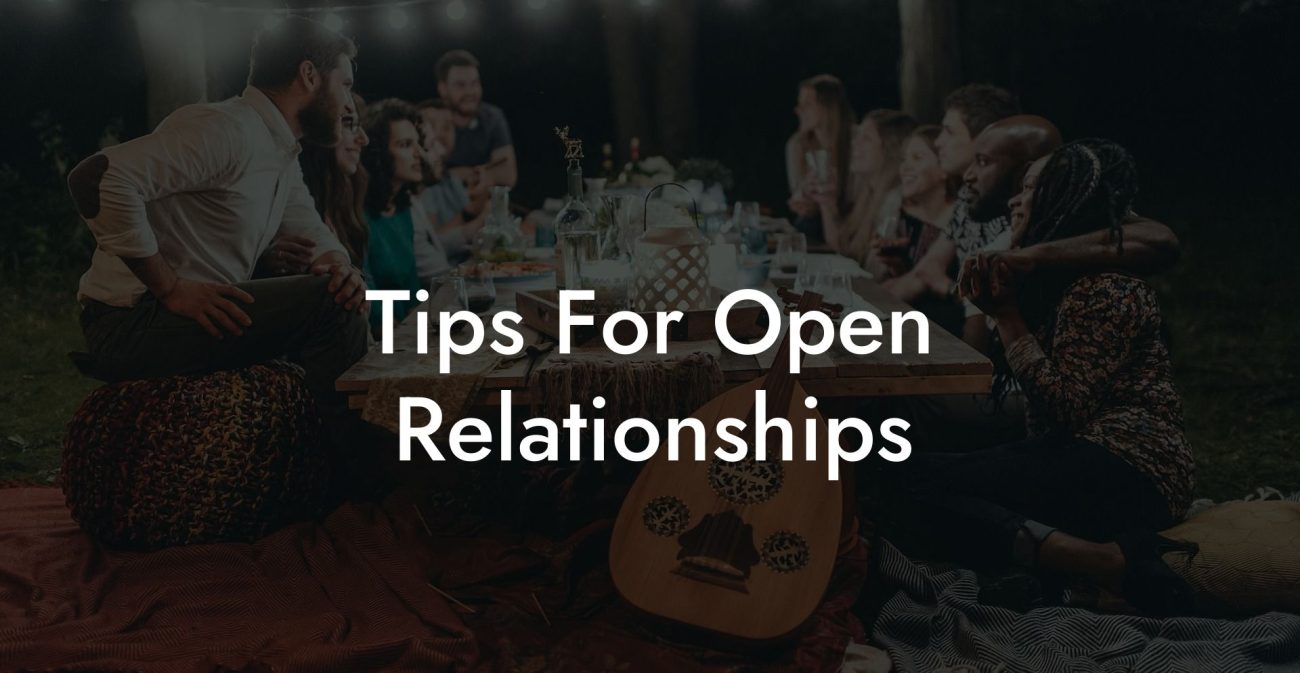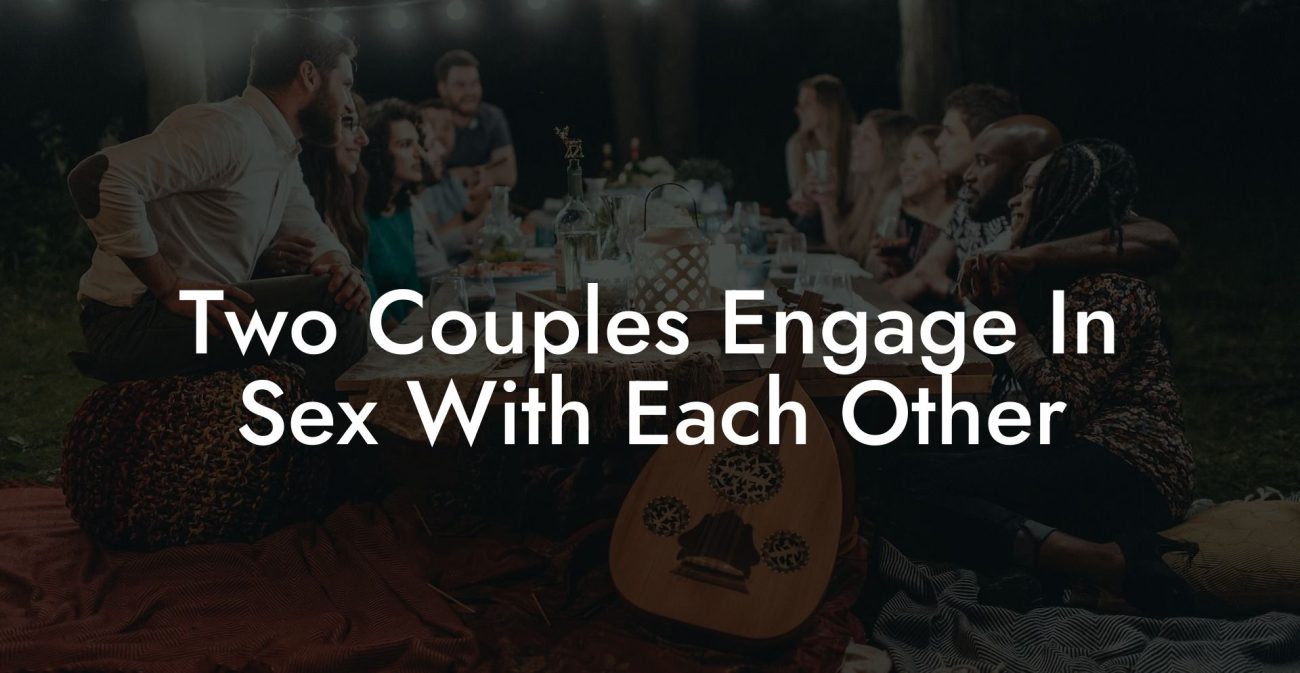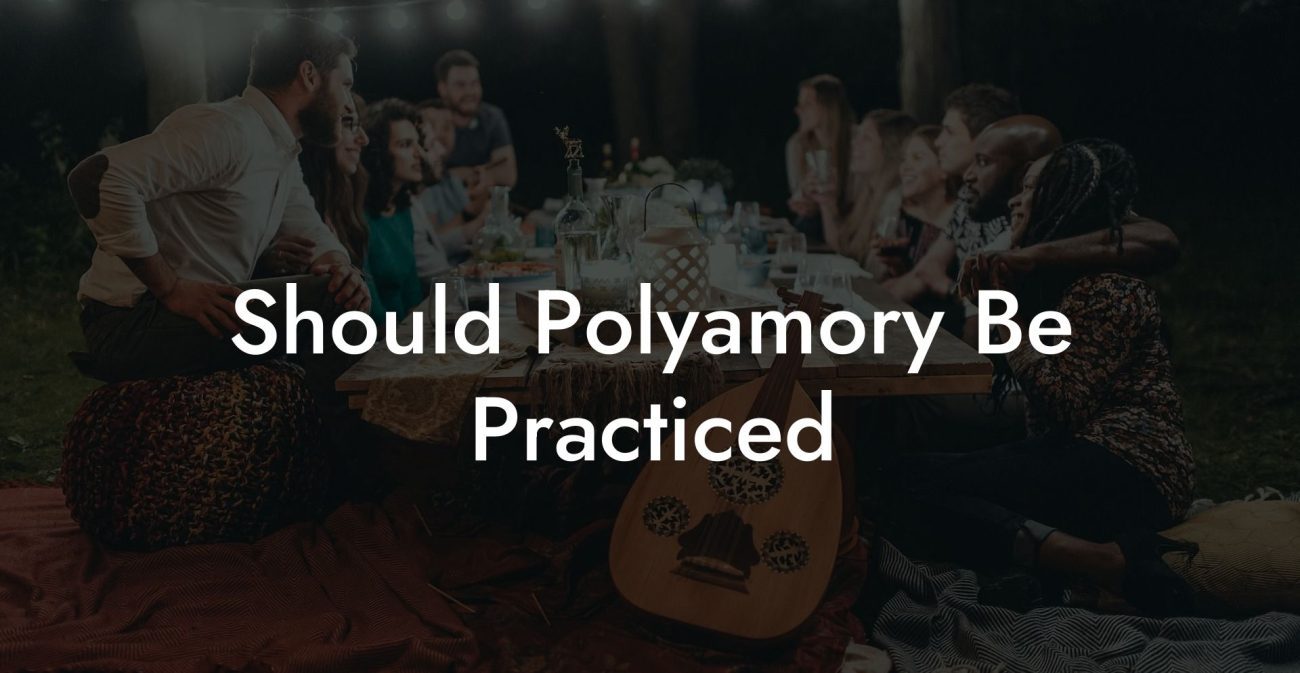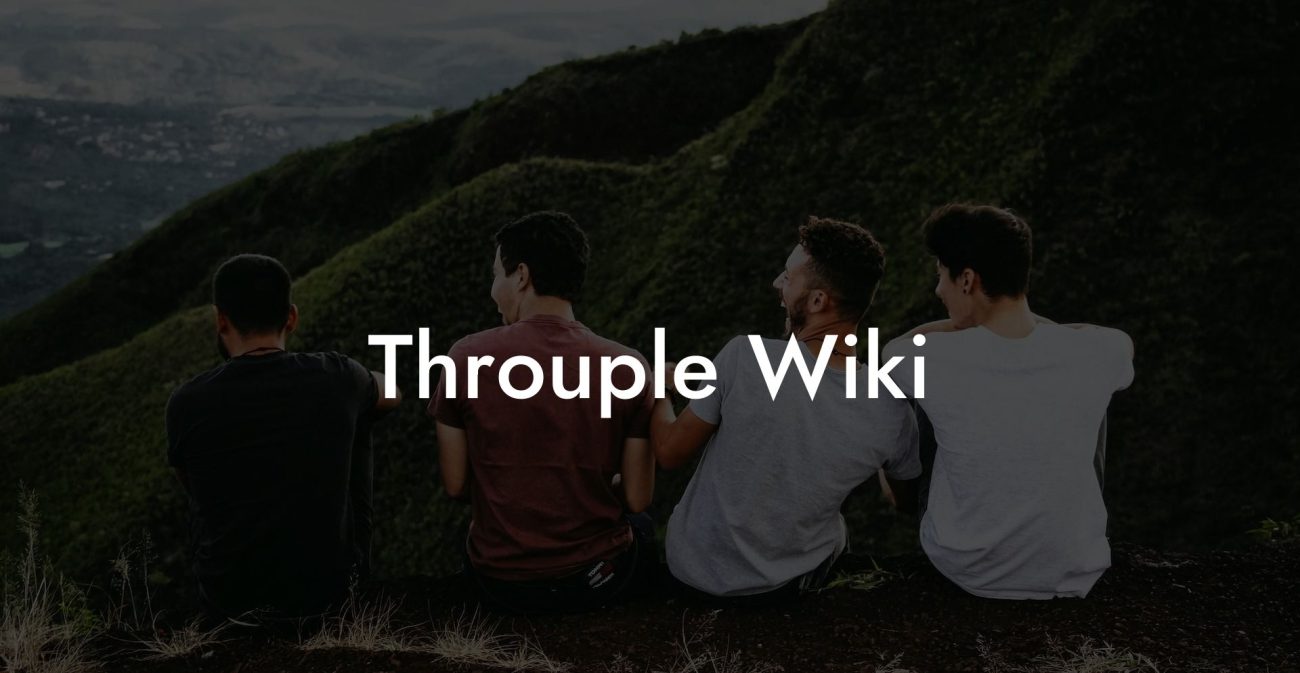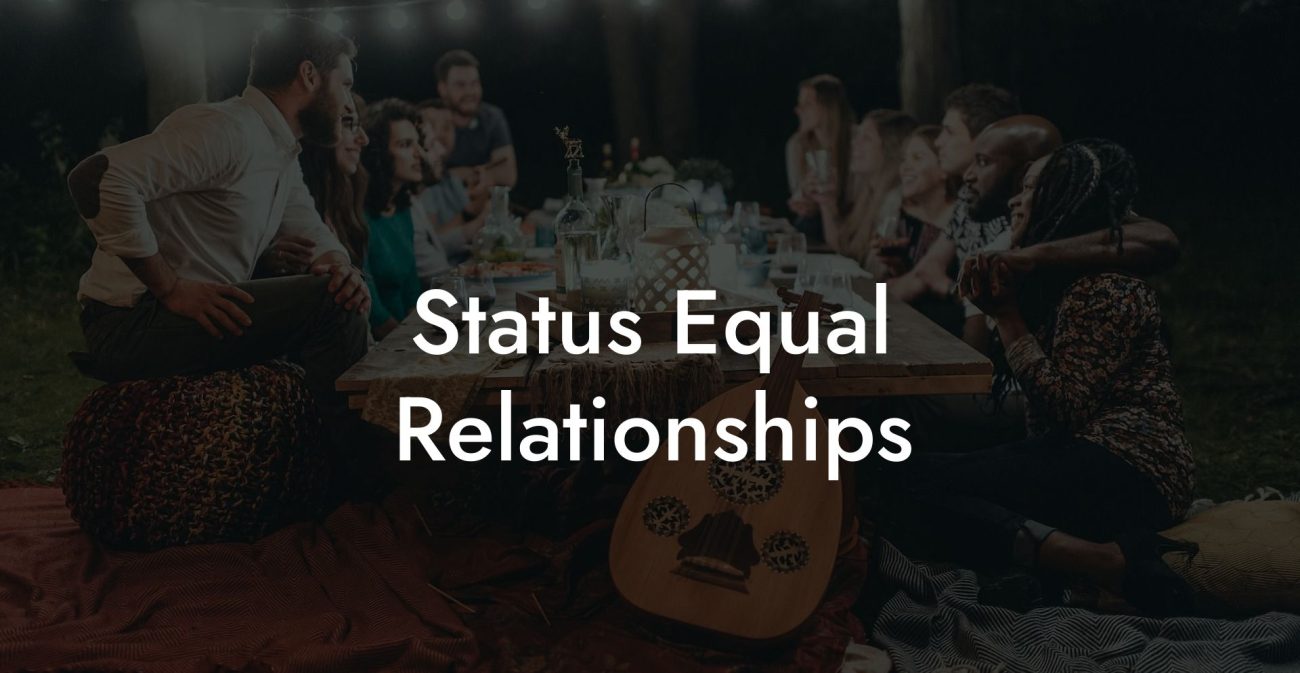Guide to Poly Dynamic Relations
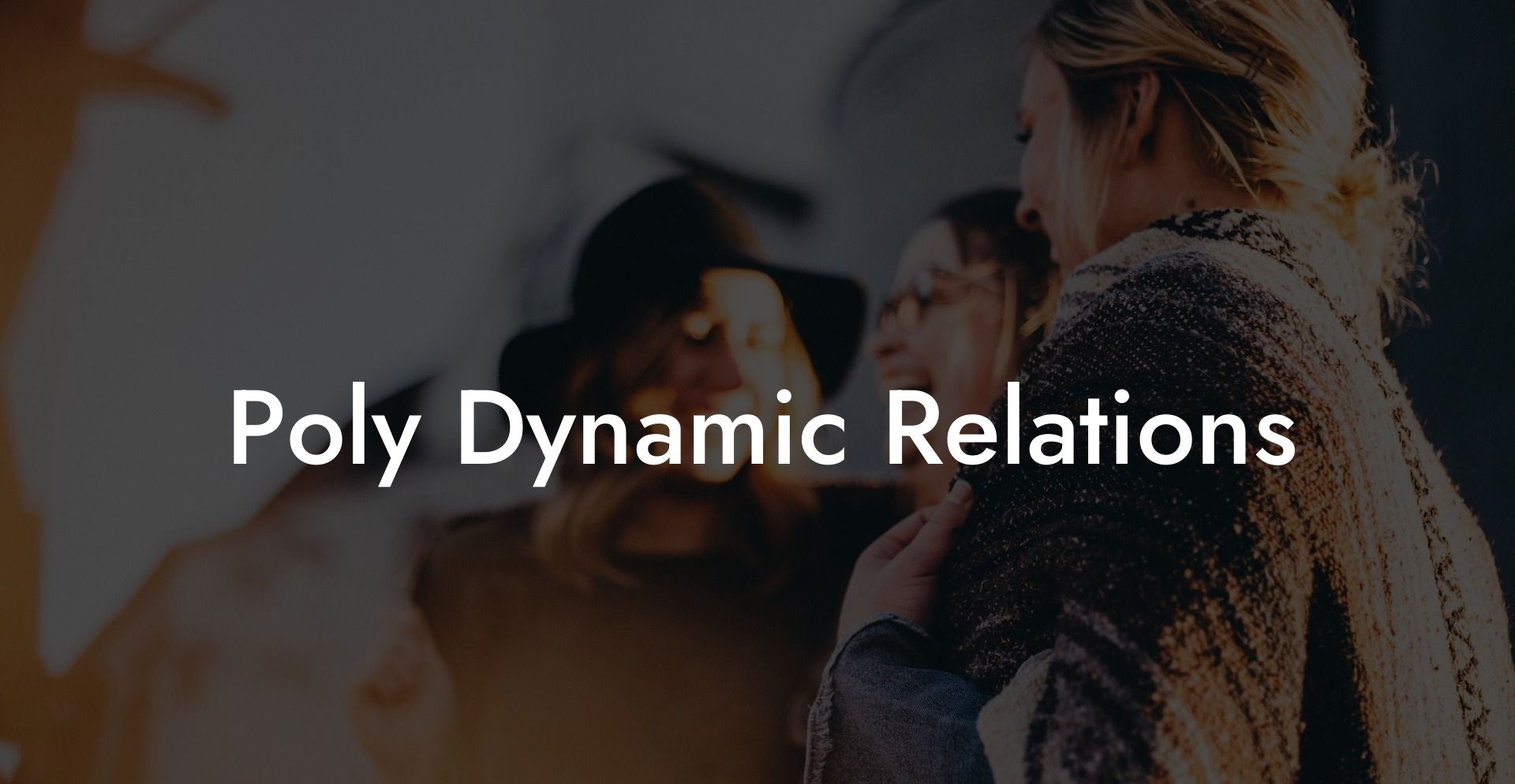
Are you curious about the ever-changing landscape of poly relationships—where connections are fluid, roles evolve, and every bond has its own unique rhythm? If you’ve found yourself wondering, “What are poly dynamic relations and can I thrive in them?” then this guide is for you. We’ll explore the concept of poly dynamic relations, break down the core principles that keep these networks vibrant, discuss the benefits and challenges, and offer practical tips for navigating an ever-evolving web of connections.
Have you ever wondered if monogamy is just a stupid little experiment? Open relationships, polyamory, relationship anarchy...find out which relationship dynamic suits you best with our one minute relationship test. See if you are just conforming to "societal norms". Reveal your truth >>
Quick Links to Useful Sections
- Understanding Poly Dynamic Relations
- What Are Poly Dynamic Relations?
- Core Principles of Poly Dynamic Relations
- Open Communication
- Flexibility and Adaptability
- Mutual Consent and Transparency
- Respect for Individuality
- Benefits of Embracing Poly Dynamic Relations
- Diverse Emotional Fulfillment
- Personal Growth and Self-Awareness
- Enhanced Flexibility in Love
- Challenges and How to Overcome Them
- Managing Jealousy and Insecurity
- Balancing Time and Energy
- Negotiating Constant Change
- Handling External Judgment
- Practical Tips for Navigating Poly Dynamic Relations
- 1. Prioritize Regular Check-Ins
- 2. Use Digital Tools for Organization
- 3. Embrace Flexibility
- 4. Engage in Self-Reflection
- 5. Build a Supportive Community
- Real-Life Stories: Voices from the Poly Dynamic Community
- Case Study: Jamie’s Evolving Connections
- Case Study: Taylor’s Journey of Adaptation
- FAQ: Your Poly Dynamic Relations Questions Answered
Understanding Poly Dynamic Relations
What Are Poly Dynamic Relations?
Poly dynamic relations refer to the ever-evolving, fluid nature of relationships within a polyamorous network. Unlike traditional models where roles and boundaries may be fixed, poly dynamic relations embrace change—allowing each connection to grow, shift, or even fade over time. In these relationships, flexibility and adaptability are key. Whether you’re forming new bonds or renegotiating existing ones, the focus is on creating a supportive and open environment where every relationship is uniquely tailored to the needs and desires of those involved.
Central to poly dynamic relations are concepts like open communication, flexible boundaries, and continuous consent. These relationships aren’t static; they evolve as each person’s life, feelings, and priorities change.
Core Principles of Poly Dynamic Relations
Open Communication
The lifeblood of poly dynamic relations is clear, honest, and ongoing dialogue. Regular check-ins, active listening, and “I” statements help ensure that everyone’s needs are understood and respected. This continuous communication allows each relationship to adapt naturally over time.
Flexibility and Adaptability
In a poly dynamic setup, boundaries and roles are not fixed. Instead, they’re negotiated and renegotiated as circumstances change. Embracing flexibility means understanding that what worked yesterday might need adjustment today—and that’s perfectly okay.
Mutual Consent and Transparency
Every new connection or change in the dynamic requires enthusiastic consent and full transparency from all parties. This ongoing process builds trust and ensures that everyone is on board with how the relationships evolve.
Respect for Individuality
While you’re part of a network of relationships, each connection is valued for its unique contribution. Respecting individuality means supporting each partner’s personal growth and acknowledging that each relationship can offer something different.
Benefits of Embracing Poly Dynamic Relations
Diverse Emotional Fulfillment
Poly dynamic relations allow you to experience different types of intimacy and support from multiple connections. Each relationship can fulfill a unique emotional need, creating a rich tapestry of experiences that enrich your life.
Personal Growth and Self-Awareness
Navigating dynamic relationships encourages constant self-reflection and growth. You learn more about your boundaries, desires, and how to communicate effectively—skills that benefit every aspect of your life.
Enhanced Flexibility in Love
The fluid nature of poly dynamic relations means you’re free to adapt as your life and feelings change. This flexibility can lead to a more resilient and fulfilling relationship network, as you’re not confined to one static definition of love.
Challenges and How to Overcome Them
Managing Jealousy and Insecurity
Even in the most open and honest relationships, feelings of jealousy or insecurity can arise. The key is to address these emotions early on through self-reflection and open dialogue with your partners. Regular check-ins can help diffuse tension and transform these feelings into opportunities for growth.
Balancing Time and Energy
Juggling multiple, evolving relationships can be demanding. Effective time management and prioritization are crucial. Using scheduling tools and setting clear expectations about availability can help ensure that each connection receives the attention it needs.
Negotiating Constant Change
With dynamic relationships, boundaries and roles may shift frequently. This can be challenging if constant renegotiation feels exhausting. Building a routine of regular discussions and maintaining flexibility can help ease the process.
Handling External Judgment
Despite growing acceptance, poly dynamic relations can still face societal stigma. Surround yourself with a supportive community that values openness and authenticity, and remember that your relationship choices are valid and unique.
Practical Tips for Navigating Poly Dynamic Relations
1. Prioritize Regular Check-Ins
Schedule weekly or monthly meetings with each partner or the group as a whole. These check-ins are opportunities to discuss feelings, update boundaries, and ensure everyone is on the same page.
2. Use Digital Tools for Organization
Leverage tools like shared calendars, scheduling apps, or a digital dashboard (e.g., Notion or Trello) to keep track of dates, responsibilities, and important discussions. This helps manage time and reduces the stress of juggling multiple connections.
3. Embrace Flexibility
Understand that relationships are fluid. Be open to adjusting boundaries and roles as your needs change. Flexibility allows you to adapt and grow alongside your partners.
4. Engage in Self-Reflection
Regularly journal your thoughts and feelings. Self-reflection helps you understand your emotional triggers and needs, ensuring you can communicate them clearly to your partners.
5. Build a Supportive Community
Connect with like-minded individuals through online forums, social media groups, or local meet-ups. Sharing experiences and advice can provide reassurance and valuable insights into managing dynamic relationships.
Real-Life Stories: Voices from the Poly Dynamic Community
Case Study: Jamie’s Evolving Connections
Jamie found that embracing the fluid nature of poly dynamic relations allowed for deep personal growth. Through regular check-ins and a commitment to transparency, Jamie learned to navigate shifting boundaries and discovered that each connection brought a unique kind of fulfillment.
Case Study: Taylor’s Journey of Adaptation
Taylor experienced the challenges of balancing multiple relationships, but by prioritizing self-reflection and open communication, they turned potential conflicts into opportunities for increased intimacy and trust. Taylor’s story is a testament to the power of flexibility and mutual respect.
FAQ: Your Poly Dynamic Relations Questions Answered
1. What are poly dynamic relations?
Poly dynamic relations refer to the fluid and evolving nature of relationships within a polyamorous network, where boundaries, roles, and connections change over time based on the needs and growth of all involved.
2. How do poly dynamic relations differ from traditional polyamory?
While traditional polyamory can sometimes imply more fixed roles or hierarchies, poly dynamic relations emphasize fluidity and adaptability, with boundaries and roles continuously renegotiated as relationships evolve.
3. What are the benefits of poly dynamic relations?
Benefits include diverse emotional fulfillment, increased personal growth, enhanced flexibility in love, and the opportunity to experience a rich tapestry of connections.
4. What challenges might I face?
Challenges can include managing jealousy, balancing time and energy across multiple relationships, and dealing with constant changes in dynamics. Open communication and regular check-ins are crucial.
5. How important is communication in poly dynamic relations?
Communication is absolutely essential. Regular, honest dialogue helps ensure that all partners feel heard, respected, and aligned as the relationship evolves.
6. How can I manage jealousy in a fluid relationship environment?
Address jealousy by discussing your feelings openly, engaging in self-reflection, and using support systems such as therapy or peer groups to work through your emotions.
7. Can poly dynamic relations provide long-term stability?
Yes, with effective communication, flexible boundaries, and mutual respect, poly dynamic relations can lead to stable and fulfilling long-term connections.
8. What tools can help me manage multiple dynamic relationships?
Digital tools like shared calendars, scheduling apps, and relationship management platforms (e.g., Notion or Trello) can help you organize and balance your time effectively.
9. How do I know if poly dynamic relations are right for me?
Reflect on your emotional needs, your comfort with flexibility, and your ability to communicate openly. If you thrive on diverse experiences and are willing to adapt as your relationships evolve, this model may suit you well.
10. Where can I find more support and resources?
Books like "The Ethical Slut" and "More Than Two", podcasts such as “Multiamory,” and online communities on Reddit and Facebook are excellent resources for additional insights and support.
Resources and Community Support: Your Next Steps in Exploring Poly Dynamic Relations
- "The Ethical Slut" by Dossie Easton & Janet Hardy – A classic guide to non-monogamous relationships.
- "More Than Two" by Franklin Veaux & Eve Rickert – Offers in-depth insights into polyamory and the evolution of relationship dynamics.
- Podcasts: Shows like “Multiamory” provide personal stories and expert advice on managing diverse and evolving relationships.
- Online Communities: Engage with forums and social media groups on platforms such as Reddit (e.g., r/polyamory) to share experiences and gain support.
Additionally, consider seeking guidance from a therapist or relationship coach experienced in polyamorous dynamics. With thoughtful self-reflection, open communication, and the right tools, you can navigate the fluid world of poly dynamic relations and build connections that are both fulfilling and authentic.
Lost & confused by all of the terms, types and seemingly made up 3 letter acronyms?? We've got you. Check out our Ethnical Non-Monogamy Dictionary >>
Useful Interruption: Not sure which relationship vibe fits you best? Take our Relationship Test, it’ll give you the real insight into your natural relationship style. Then, dive into our binge-worthy guides (from the tried-and-true to the “wait, that’s a thing?”) and find the perfect relationship type for your life:
- Monogamy
- Open Relationships
- Ethical Non-Monogamy
- Solo Polyamory
- Non-Hierarchical Polyamory
- Hierarchical Polyamory
- Relationship Anarchy
- Swinging
Now back to the main article but yeah take the test...

